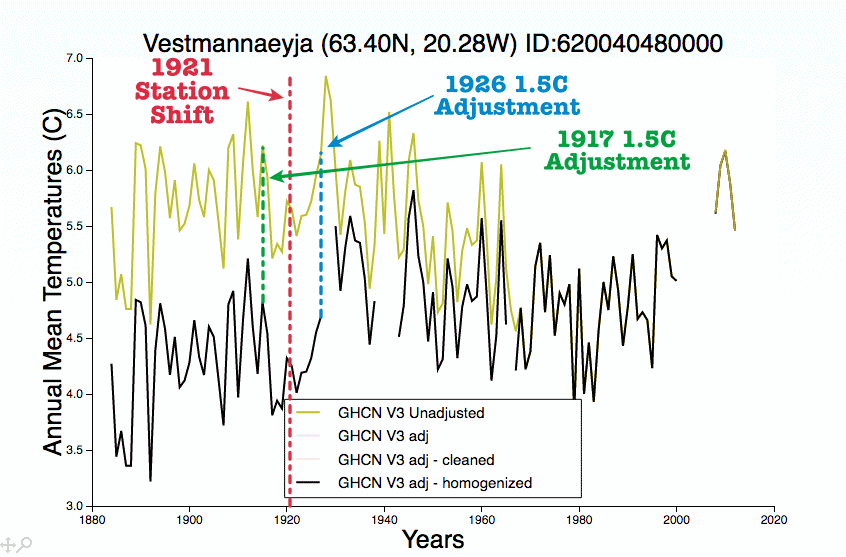Two days ago I reported on Trausti Jónsson of the Icelandic Met Office reversing his long established complaints about NASA/NCDC temperature adjustments in Iceland. After being a vocal critic of the adjustments for years, he suddenly reversed roles and allowed himself to be used in a Canberra Times hit piece on Senator Malcolm Roberts, who had asked Gavin Schmidt for an explanation of the adjustments being made in Iceland. Apparently progressives don’t believe that Senators should be allowed to ask questions of public servants.
“During this early period there was a large daytime bias in the temperature data from Iceland as presented in this publication,” which accounted for much of the “discrepancy” at Teigarhorn and less so at Vestmannaeyjar, Mr Jonsoon said.
For the latter station, it was relocated in October 1921 to a higher elevation. “Comparative measurements at both sites have shown that the later location is about 0.7 degrees Celsius colder than the former – this relocation has to be ‘adjusted’ for,” he said.
“I assure you that these adjustments are absolutely necessary and well founded although the finer details of the resulting series shown in your letter differ slightly from my own version,” he told Senator Roberts.
NASA chief slaps down climate sceptic senator Malcolm Roberts: ‘You hold a number of misconceptions’
Previously Jónsson had flat out rejected the GHCN “corrections.”
c) Does the Met Office accept that their own temperature data is in error, and that the corrections applied by GHCN are both valid and of the correct value? If so, why?The GHCN “corrections” are grossly in error in the case of Reykjavik but not quite as bad for the other stations. But we will have a better look. We do not accept these “corrections”.d) Does the Met Office intend to modify their own temperature records in line with GHCN?
No.Another GISS miss, this time in Iceland | Watts Up With That?
Then Gavin ramped up the lies even further.
Dr Schmidt said the Arctic was “not so much” the target of data critics.
That was quite a whopper. But for now let’s look at the Vestmanneyia station more closely. How does a 1921 station shift explain that many of the NCDC adjustments after 1921 are just as large or larger than before 1921? The 1926 adjustment was just as large as the 1917 adjustment. The explanation given in the Canberra Times provides no answers for the massive post-1921 adjustments. It was just blowing smoke.
Data.GISS: GISS Surface Temperature Analysis
Icelandgate is going to be a huge scandal, and I will be pressing it moving forwards.


